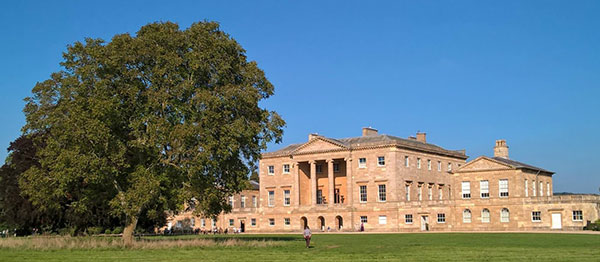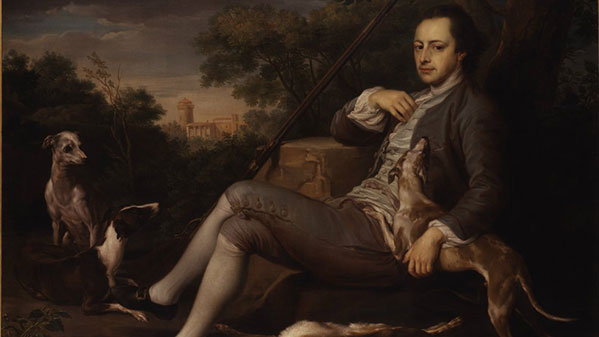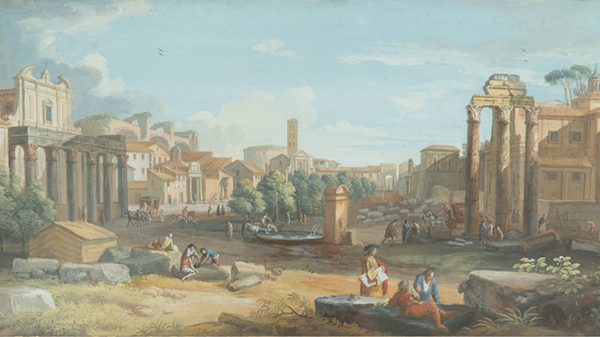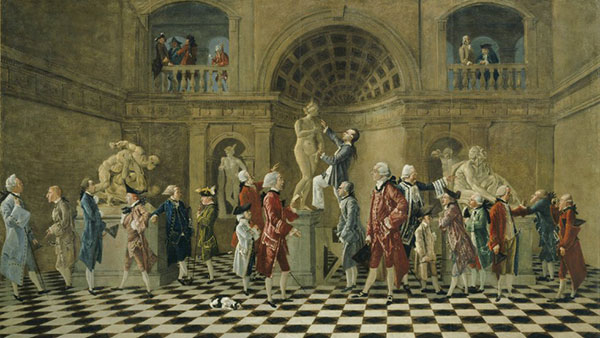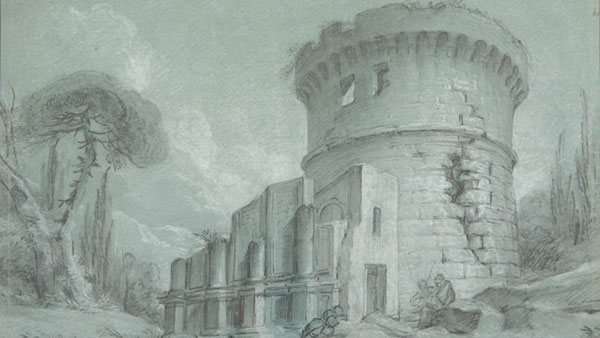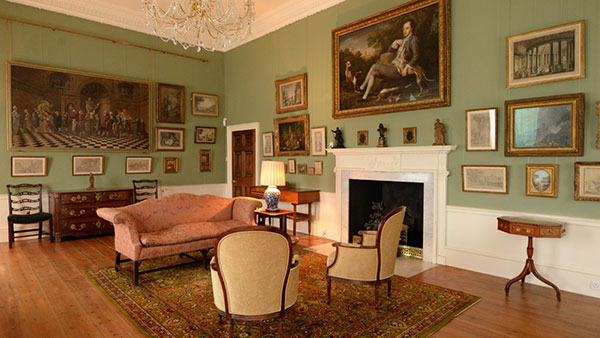By, Dr. Gabriella de la Rosa
A remarkable gathering of artwork that illuminates a collector’s interest in the Grand Tour is now on display at Basildon Park. This exhibition of art works including impressive Old Masters, 20th century engravings and paintings of the Grand Tour. Basildon Park interiors are featured in Downton Abbey as Grantham House.
This content can originally be seen on the National Trust site, here.
Connoisseur and collector
The scholar Sir Brinsley Ford (1908-99) was passionate about art throughout his life. A precocious collector from the age of 11, he inherited from his family not only a formidable collection, but a discerning eye and taste for art. Over the course of his lifetime, he expanded his collection with great passion, amassing paintings, drawings, sculpture and decorative arts to fill his west London terrace house at 14 Wyndham Place.
Over the years, Sir Brinsley’s scholarly pursuits and collecting interests coalesced. He became a leading authority on the subject of the Grand Tour and the additions he made to his collection reflect this knowledge. The highlights of the current display at Basildon Park bring to life the itineraries of the tourists themselves, including the activities they engaged in, the objects they collected and the sites they visited.
The lure of Italy
The Grand Tour – that period of travel in Europe generally undertaken by wealthy young men – was established in the 1660s and flourished throughout the 18th and early 19th centuries. It commonly took place at the end of one’s formal education and was seen as a means of shaping the creative, intellectual and cultural sensibilities of aspiring gentleman. Depending upon personal circumstances, this pilgrimage could last anywhere from several months to several years.
For most Britons who embarked upon the Tour, Italy represented the cultural apex of their continental journey. With its picturesque countryside, ongoing archaeological excavations and staggering repository of art and antiquities, Italy brimmed with possibilities for cultural enrichment.
Doyen of painters
Whilst in Italy, tourists were eager to have their portraits painted to commemorate their trip, and in Rome, no portraitist was more sought after than Pompeo Batoni. Batoni specialised in portraits of foreign aristocrats, situating them in evocative landscapes of famous sites and monuments in Rome and its countryside. Batoni’s portraits played an important role in the articulation of aristocratic identity and his work became the prototype for grand tour portraiture well into the 19th century.
Humphry Morice, the son of a wealthy merchant, was on his first tour of Italy in 1760-2 when he sat for Batoni. Pictured in casual repose after a day out hunting, Morice is dressed rather fancifully in a shot silk suit, surrounded by his hounds, his musket and the day’s game. Although the setting of the portrait is that of the Campagna, two towers of the Vatican are discernible in the distance, clearly locating Morice within the Grand Tour circuit.
Postcards, 18th-century style
Prior to the advent of digital photography, the most popular pictorial souvenirs were postcards. In the 18th century, however, tourists commissioned and purchased painted ‘vedute’ (views) of the places they visited. Giovanni Battista Busiri specialised in producing ‘vedute’ of Rome for foreign collectors. The Campo Vaccino, with its warm, sun-drenched palette and architectural descriptiveness, would have served as a charming memento of a Roman sojourn. Later, views such as these would fuel the Grand Tour market – the production of images calculated to appeal to an international public.
Humphry Morice, the son of a wealthy merchant, was on his first tour of Italy in 1760-2 when he sat for Batoni. Pictured in casual repose after a day out hunting, Morice is dressed rather fancifully in a shot silk suit, surrounded by his hounds, his musket and the day’s game. Although the setting of the portrait is that of the Campagna, two towers of the Vatican are discernible in the distance, clearly locating Morice within the Grand Tour circuit.
Postcards, 18th-century style
Prior to the advent of digital photography, the most popular pictorial souvenirs were postcards. In the 18th century, however, tourists commissioned and purchased painted ‘vedute’ (views) of the places they visited. Giovanni Battista Busiri specialised in producing ‘vedute’ of Rome for foreign collectors. The Campo Vaccino, with its warm, sun-drenched palette and architectural descriptiveness, would have served as a charming memento of a Roman sojourn. Later, views such as these would fuel the Grand Tour market – the production of images calculated to appeal to an international public.
In ‘A Gathering of the Dilettanti around the Medici Venus’, a group of foppish ‘milordi’ socialise amidst a display of antique marbles. These grossly caricatured figures are largely oblivious to the sculpted treasures which surround them. An exception is the artist who has depicted himself mounting the plinth of the celebrated Venus de’Medici to calculate her measurements.
The Society of Dilettanti was formed by elite Britons in England upon their return from their tours. Patch created a number of such paintings of the Dilettanti, parodying their reputation for irreverent behaviour whilst pursuing the study of antiquity. Indeed, the Society adopted a policy of ‘seria ludo’ – looking at serious subjects in a playful manner.
Drawn to Rome
But not all expatriates were debauched dilettanti – some were serious artists in their own right. Armed with sketchbooks and chalk, young artists wandered the streets of Rome, sketching ruins and antiquities. Some, like Charles-Michel-Ange Challe, were a recipient of the coveted Prix de Rome – an award given to the most promising painters, sculptors and architects in France for study at the French Academy in Rome for a period of three to five years.
Whilst at the French Academy, Challe would have made many informal studies of landscape, in the form of chalk drawings on coloured paper. Artists were encouraged to produced sketches like these by the hundreds, ultimately creating a visual resource to which they could turn throughout their careers. Sir Brinsley collected a number of sketches by Challe, and like Busiri’s paintings, these were displayed in Lady Ford’s Roman-themed Sitting Room.
Displaying the collection
Among its many and far-reaching influences, the Grand Tour fuelled the transformation of Britain’s historic houses and provided much of their contents. It is entirely fitting then that 69 items of the Ford collection are now on display in Basildon Park. This Palladian mansion was donated to the National Trust by Lord and Lady Iliffe who, like Sir Brinsley Ford, were avid collectors and were committed to showing their collections to the public. Indeed, as Sir Brinsley wrote, ‘the pleasure of owning a collection, and sharing it with others, fully compensates for the burdens it entails.’
